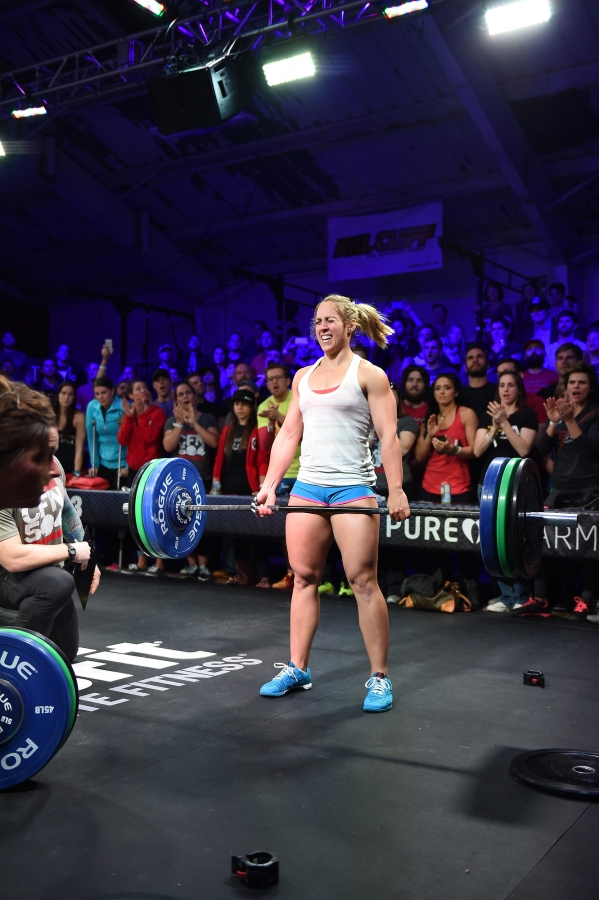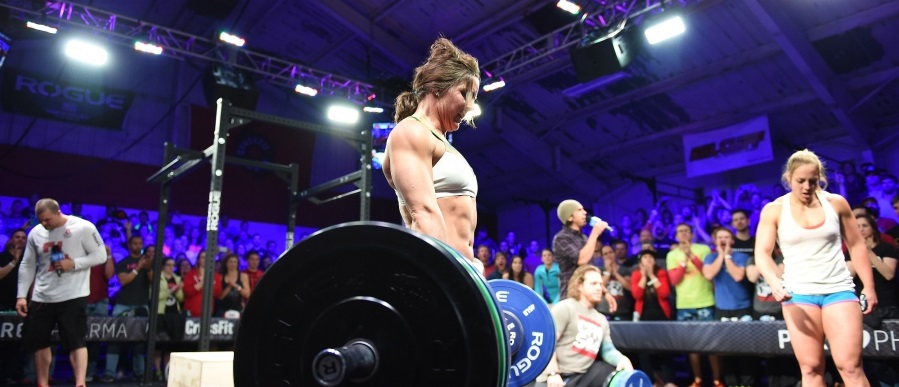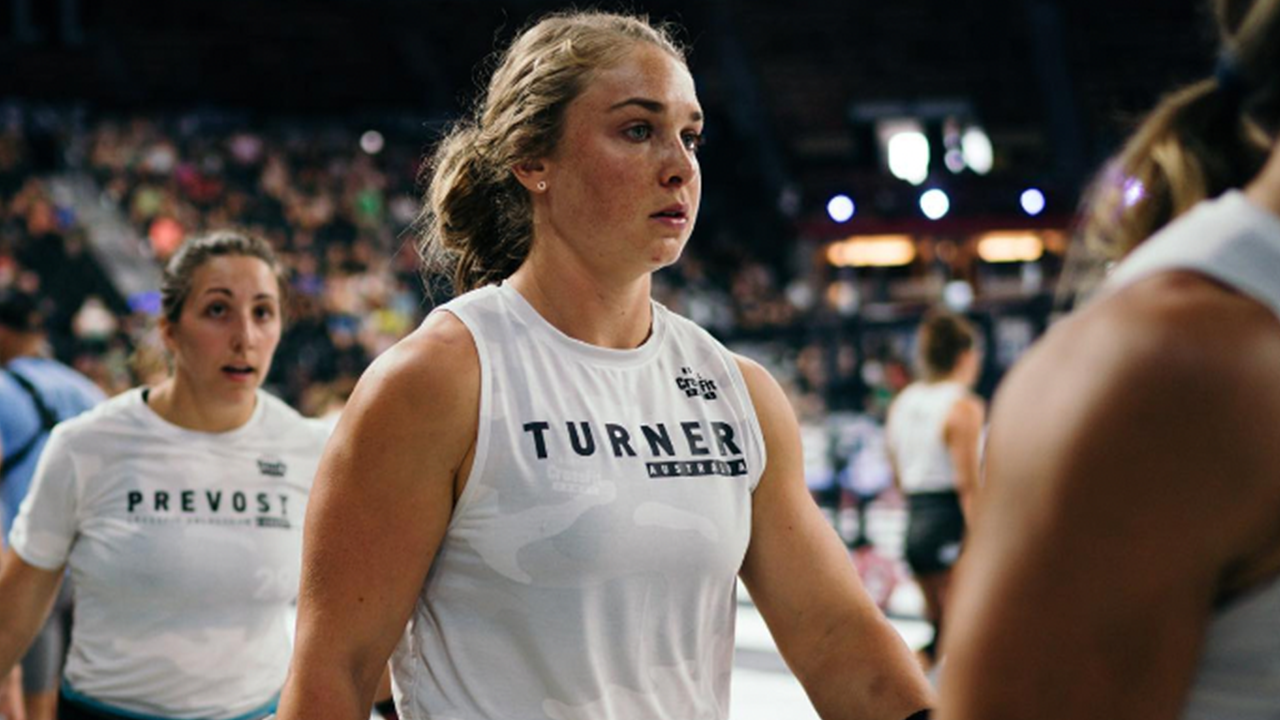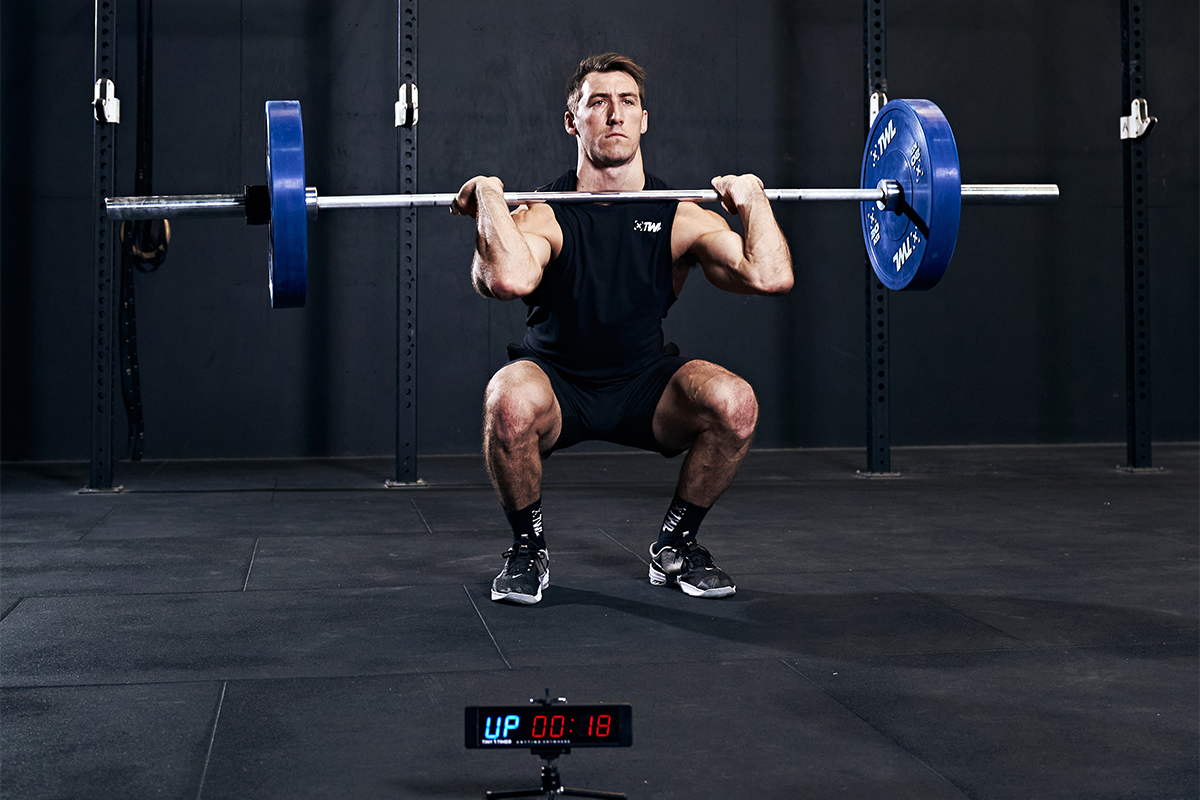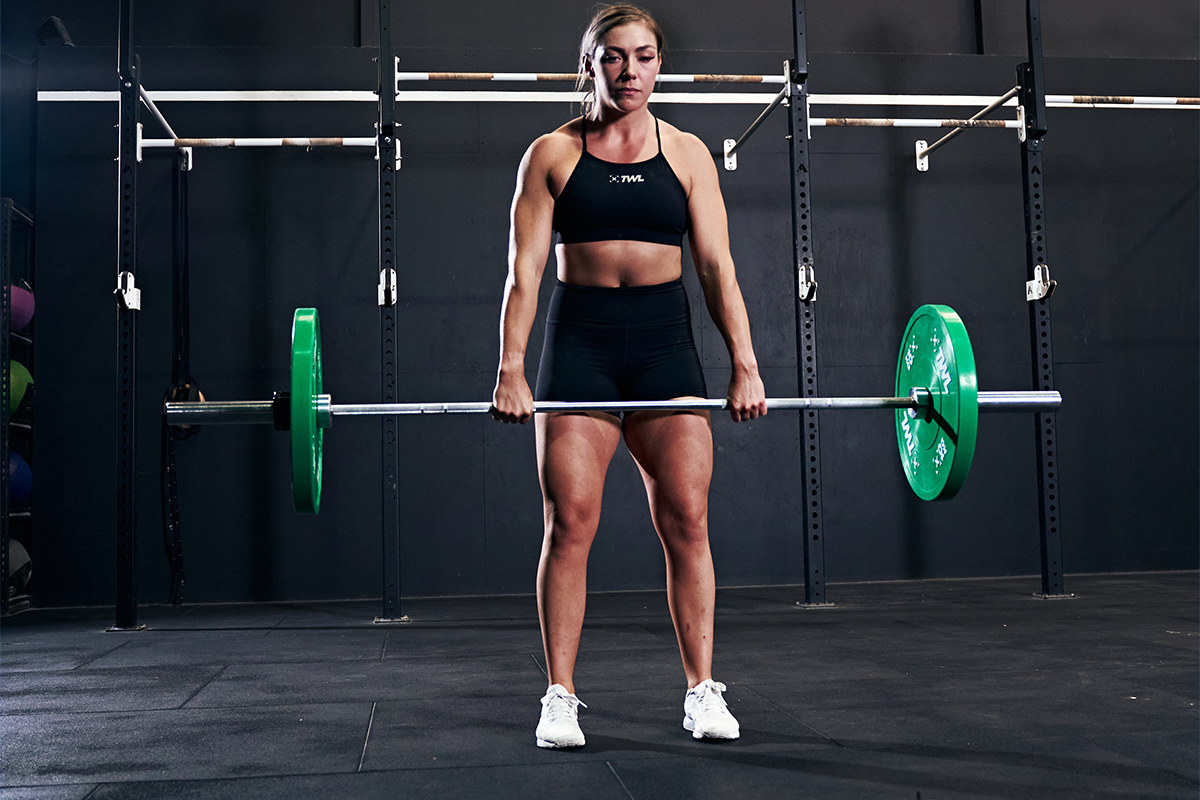This week’s workout gets heavy! This workout should divide up the truly talented athletes from the rest of the pack with two classic movements: deadlifts and box jumps. Each movement can be daunting on its own, but the real challenge this week comes from balancing the two exercises, pacing yourself, and make your transitions smooth and quick.
Weights in Kgs:
Men: 61, 84, 102, 125, 143, 166 kg
Women: 43, 61, 70, 84, 93, 102 kg
Masters Men 55+: 29, 43, 52, 61, 70, 84 kg
Master Women 55+: 43, 61, 84, 102, 125, 143 kg
The WOD Life has put together some tips for you as you prep for and perform 14.3. Get after it!
Before the workout…
- Eat! Your body needs to have ample fuel to translate into power, especially since this workout expects you to perform a high volume of heavier reps. Don’t skimp on your pre-workout meals!
- Set up your station. Make sure that you are poised for a fluid transition between the deadlifts and box jumps. Set up your station so that you are comfortable with it – you want to minimize transition time between the box jumps and the deadlifts since you will be committing a lot of time to rigging your bar.
- Lay your plates out. Instead of stacking your plates, line them up in the order you will be putting them on your bar. This will minimise the amount of time that you need to transition between weights in the deadlift ladder. Think about putting an extra plate in front of your weight that you can roll your bar onto, similar to putting a car on a jack. This will allow you to slide weights on quickly and efficiently, without the added stress of picking up the bar and attempting to jam the plates on.
- Warm up your Achilles. Rowing is especially good for ankle mobilisation, so hit the rower for a few minutes at the beginning of your warm-up. Then transition into some dynamic stretching to warm up the rest of your body and activate your hamstrings, glutes, and lower back.
During the workout…
- The faster you get through the light rounds, the more time you’ll have to focus when the bar gets heavier. When lifting in the first few rounds, be especially focused on good form. Your lumbar, t-spine, and glutes will be taxed in this workout. To avoid injury in the later stages make sure you are keeping your core tight, your spinal cord intact, and your back unbowed. Keep the bar close to your body, keep your shins vertical, and engage your hamstrings to power through the lift. Try to mix up your deadlift grip throughout the workout to avoid blasting your forearms.
- Use your transitions. The time spent building your bar is the perfect time to focus on your breathing and repeat your personal mantra, motto, or motivational phrase… whatever you need to tackle the next movement with renewed vigour.
- It’s about the deadlifts. Any intermediate CrossFitter should be able to successfully complete all of the box jumps; the real crux of this workout is how well you can perform the deadlift ladder. Similar to 14.2, your success will be based on how you break up the movements into sets. If you go too hard from the get-go, you risk burning yourself out and no-repping in the later rounds. Worse than that, you can put yourself at risk for a back injury that could sideline you for the rest of the Open.
- But don’t forget your box jump form! Use your arms for momentum. Land softly on the top of the box – the lighter and softer you are, the less force will be exerted on your body, and the more energy you will have to commit to the deadlifts.
- And don’t be afraid to step down. Ideally, the rebound method would be used in order to quickly roll through the box jumps, but if your legs are feeling like jello it’s better to slow down and step down. This will save your Achilles, and prevent you from catching your shins on the box due to fatigue.
Check out these great videos from the experts at Barbell Shrugged, Train Heroic, and Athlete’s Cell!
Athlete’s Cell
http://www.youtube.com/watch?v=2q2doMt-4yM&feature=youtu.be
Barbell Shrugged
Train Heroic
Carl Paoli
After the workout…
We’re three weeks in, and you should have a good recovery rhythm down by now. Take some time to congratulate yourself and your fellow competitors on their performance, eat and drink as necessary, and work some mobility. Most importantly, take some time to look back on your progress throughout the last three weeks. You’ve no doubt made great gains both mentally, physically, and emotionally – so leave the Leaderboard behind for a minute, and really reflect on your personal growth and development. We’re sure you’ll be amazed!

